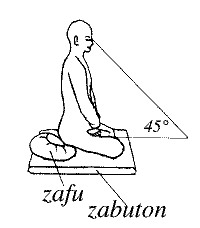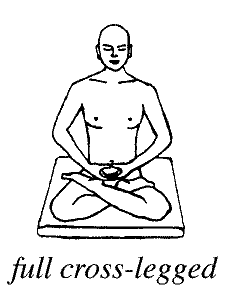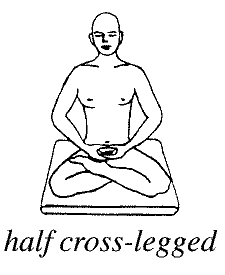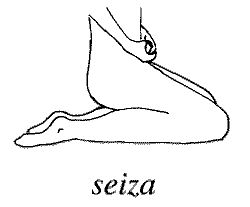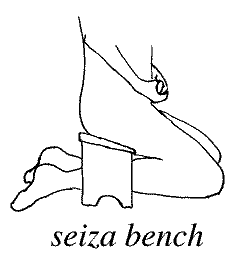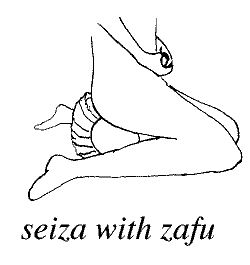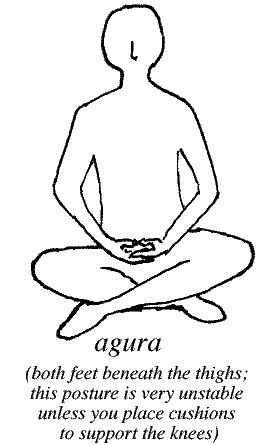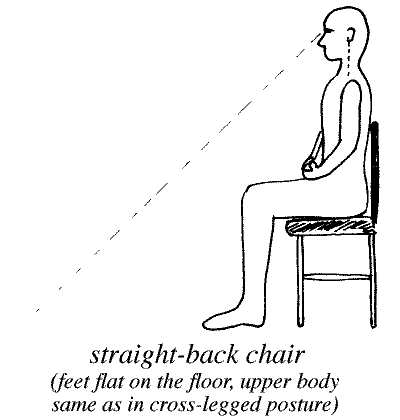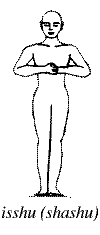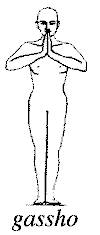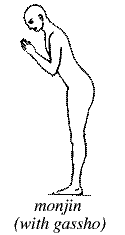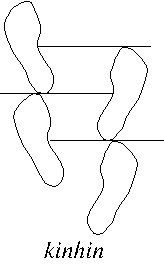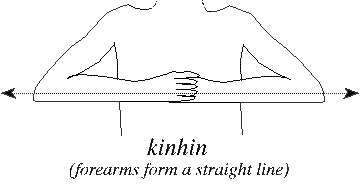
| |
| welcome |
| here now blog |
| about us |
| first time visitors |
| map/directions |
| events/schedule |
| zen practice |
| engaged buddhism |
| newsletter |
| document downloads |
| Mechanics of Zazen & Kinhin | |||||||||||||
|
On This Page: [Zazen] [Kinhin] “Now, in practicing zazen, a quiet room is suitable. Eat and drink with propriety. Avoid thoughts of good and bad; drop judgements about right and wrong, discarding all external concerns and putting all internal struggles to rest. Do not design to become a buddha, letting the drives of mind, will and consciousness cease, and stopping the measuring of memories, ideas and meditations. Zazen is beyond sitting or lying. The usual practice is to spread out a thick mat and to place a cushion on it. Then you sit in full or half lotus position (cross-legged): in the full cross-legged position, place your right foot on the left thigh, and your left foot on the right thigh; in the half cross-legged position, simply press your right thigh with the left foot. Wear your robes and belt loose, but neatly and orderly. Next, place your right hand on the left foot, and place your left palm on the right palm (both upward), thumb-tips supporting each other. Now sit upright, neither leaning to the left nor to the right, neither forward nor backward. Make sure your ears are directly over your shoulders and your nose is in line with your navel. Put your tongue against the upper gum with your lips and teeth closed. Keep your eyes always open. Breathe gently through the nose. Maintaining the proper body posture, deeply exhaling once, rocking to the left and right, settle solid and steadfast into immovable sitting, thinking the measureless thinking. How do you think the measureless thinking? No measured thoughts. Such is the essential art of zazen.” from Fukanzazengi (A Universal Recommendation for Zazen) by Master Dogen To learn more about the practice of zazen you may download Fukanzazengi from our document downloads page. ZAZEN (sitting meditation)[Top of Page]
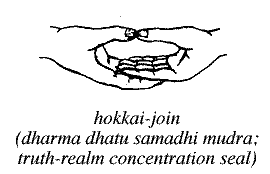
KINHIN (walking zen)[Top of Page]Kinhin is to bring forward the wakeful, concentrated, calm unfettered state into free movement, as well as to relieve any stiffness in the body from long, still sitting.
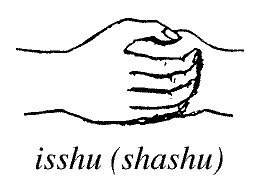
 |
